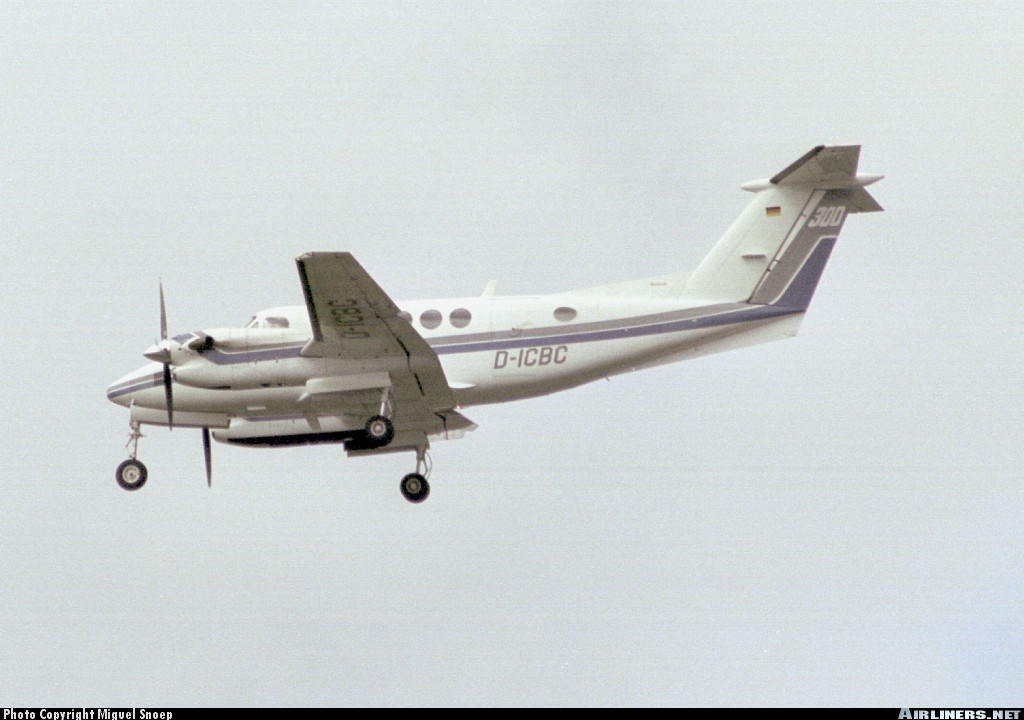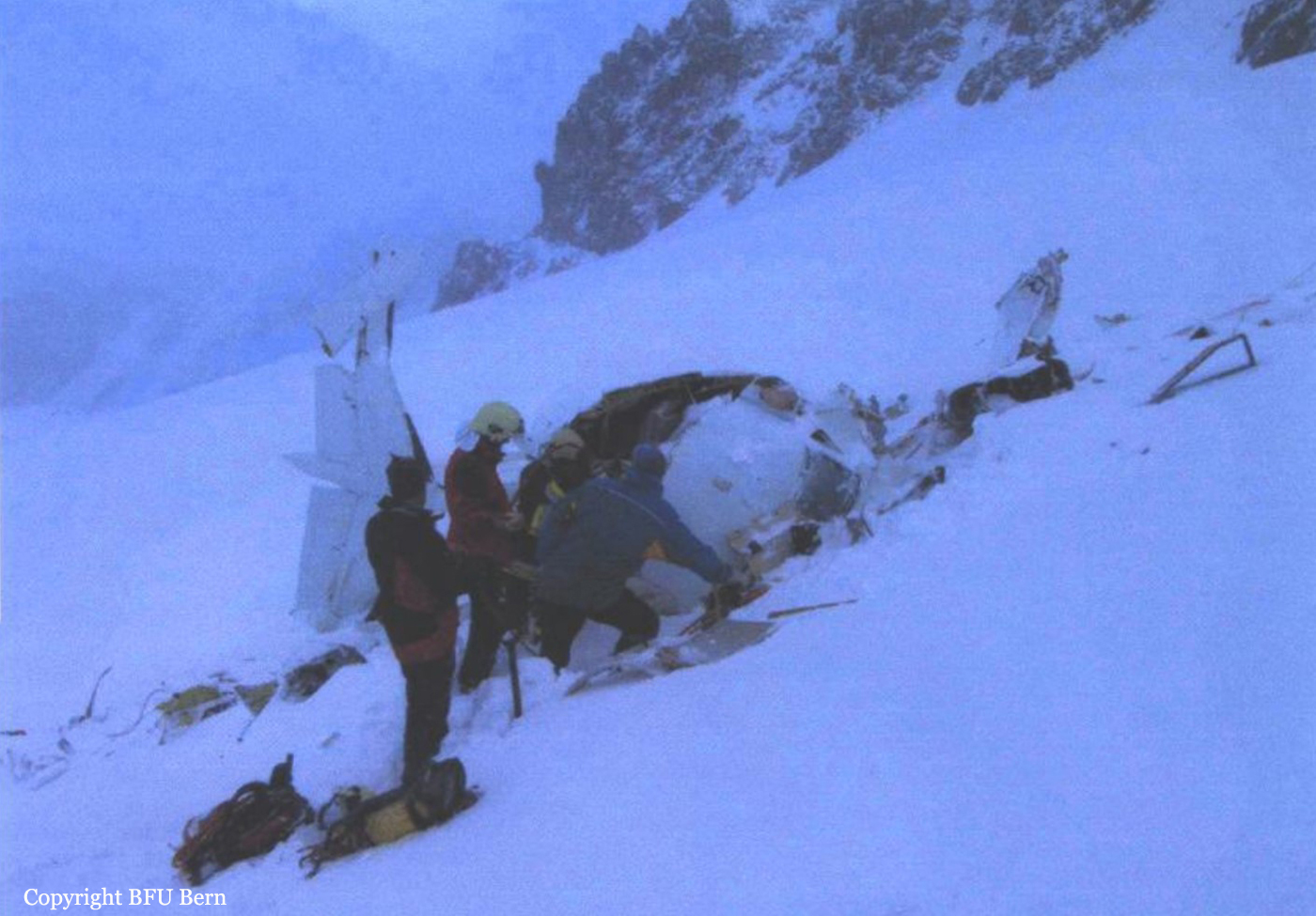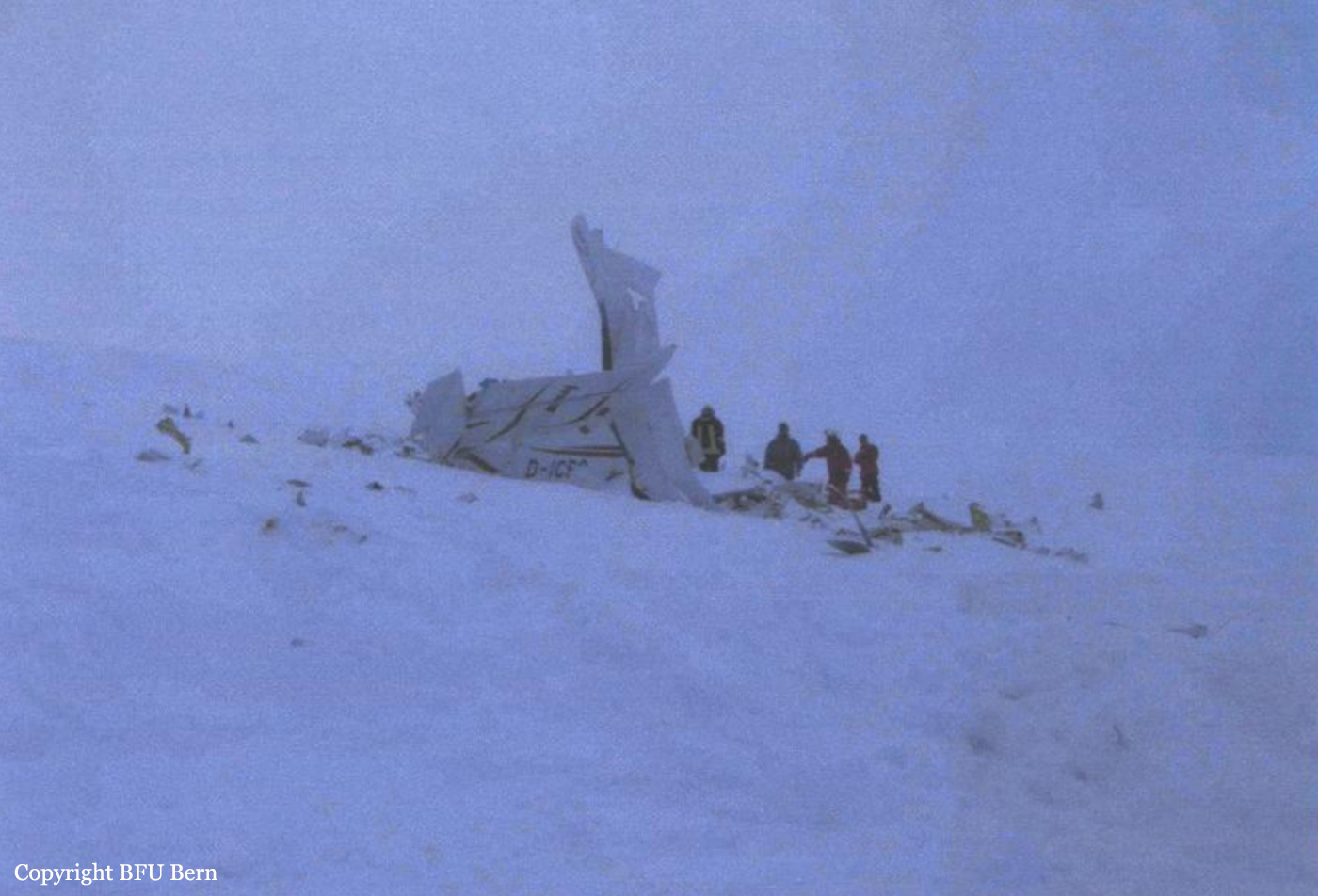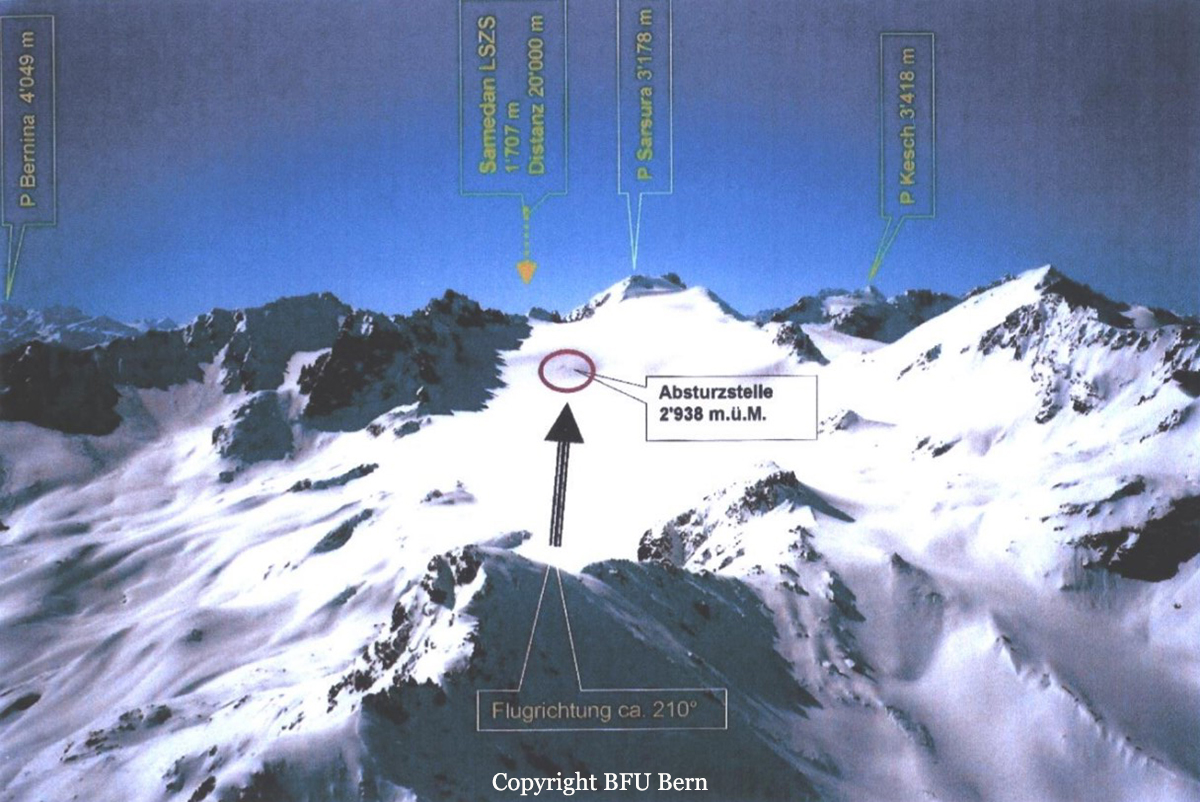Country
Crash of a Beechcraft 300 Super King Air in Zacatecas: 6 killed
Date & Time:
Apr 30, 2013 at 1221 LT
Registration:
XC-LMV
Survivors:
No
Schedule:
Zacatecas - Mexico City
MSN:
FA-83
YOM:
1986
Crew on board:
2
Crew fatalities:
Pax on board:
4
Pax fatalities:
Other fatalities:
Total fatalities:
6
Aircraft flight hours:
7146
Aircraft flight cycles:
5756
Circumstances:
Shortly after takeoff from Zacatecas Airport Runway 20, while in initial climb, the crew informed ATC about technical problems with the left engine and attempted to return to land on runway 02. Eventually, the crew attempted an emergency landing when the aircraft crashed in a soft and dry terrain located southeast of the airport, bursting into flames, about one minute after takeoff. The aircraft was totally destroyed by a post crash fire and all six occupants were killed, among them two agents of the Federal Police and one employee of the Public Minister.
Probable cause:
Precautionary landing due to probable loss of left engine power, in soft and dry terrain, bogging down the legs of the main landing gear resulting in destruction of the aircraft. The following contributing factors were identified:
- Lack of application of CRM concepts,
- Lack of adherence to standard operating procedures.
- Lack of application of CRM concepts,
- Lack of adherence to standard operating procedures.
Final Report:
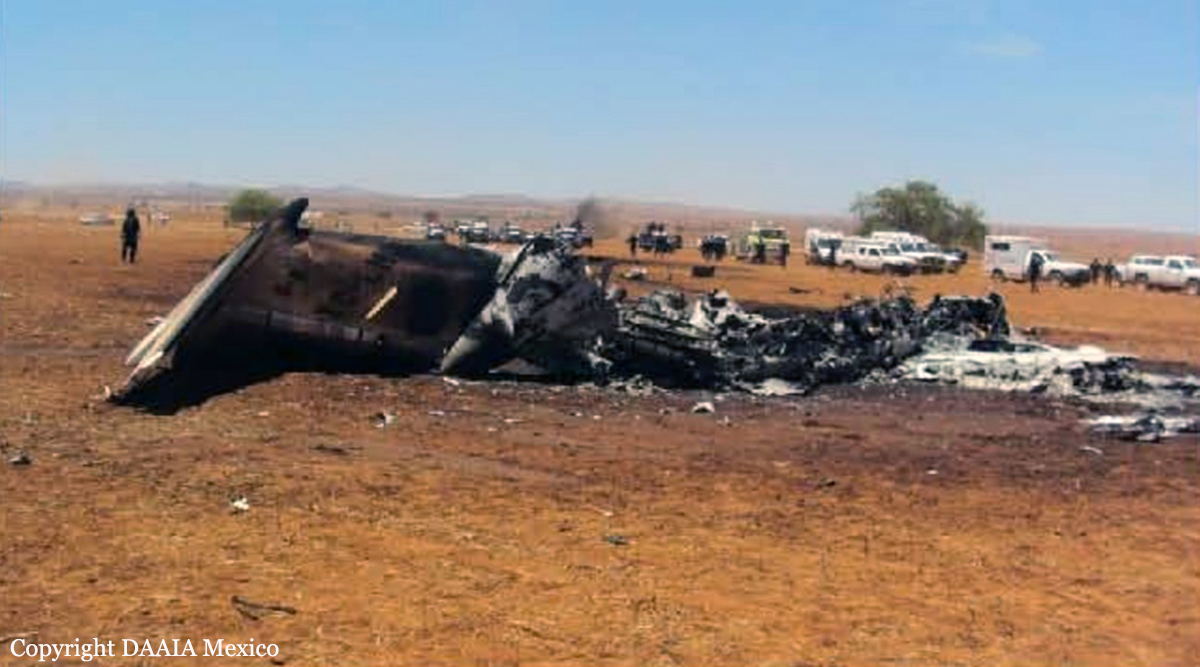
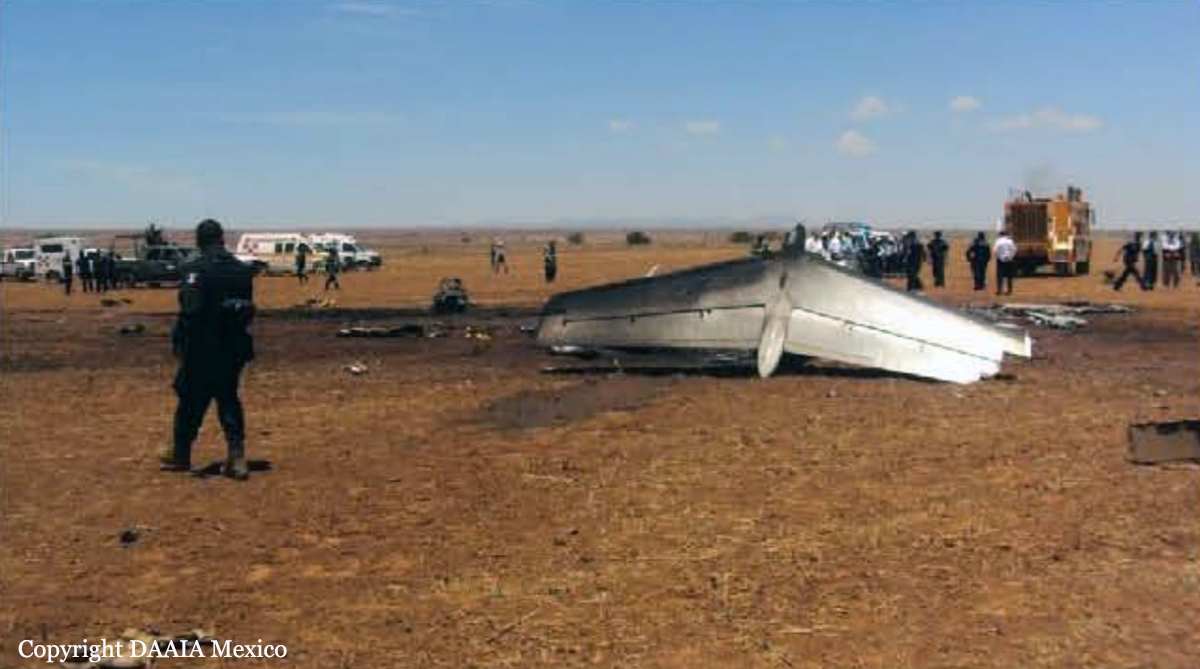
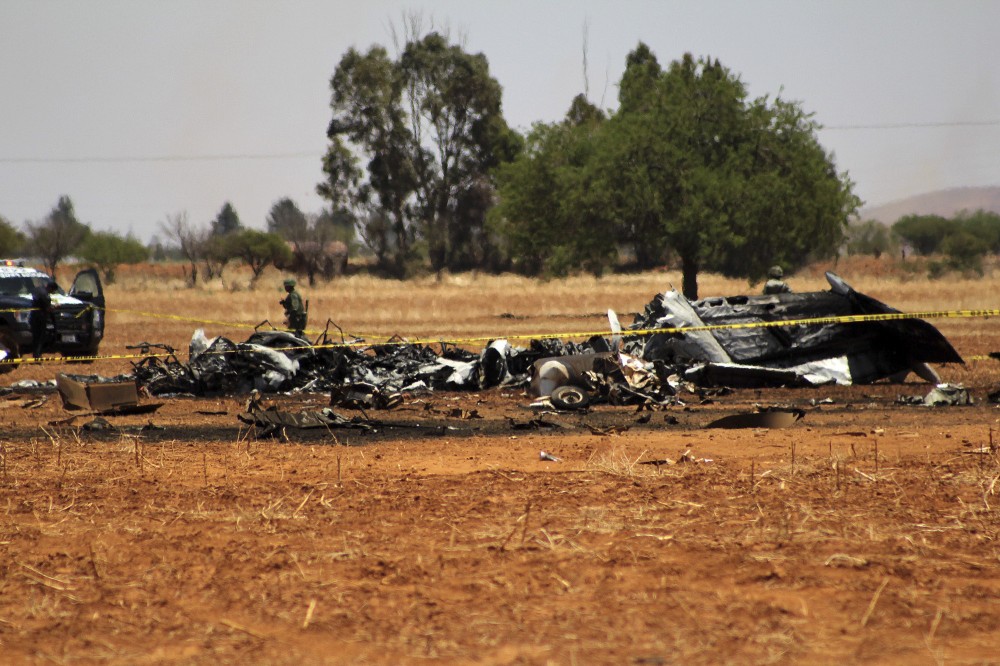
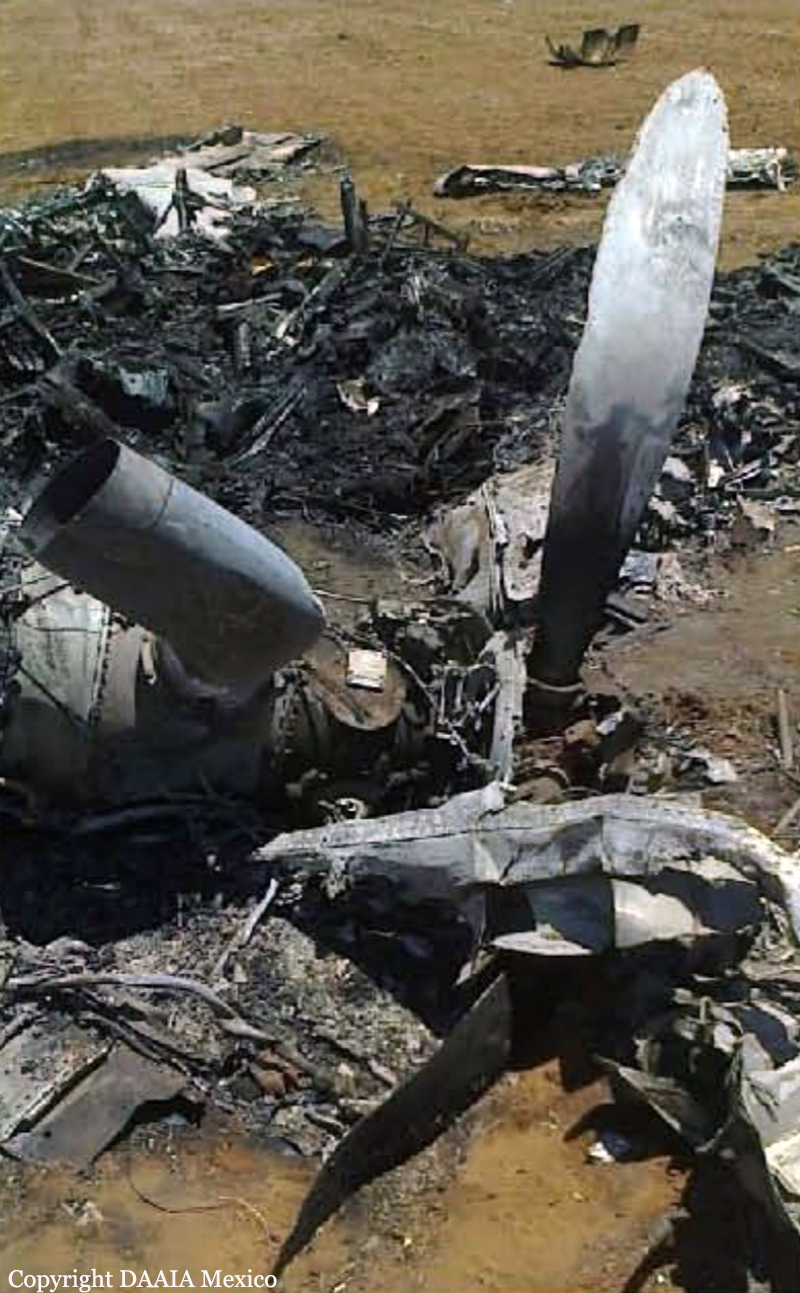
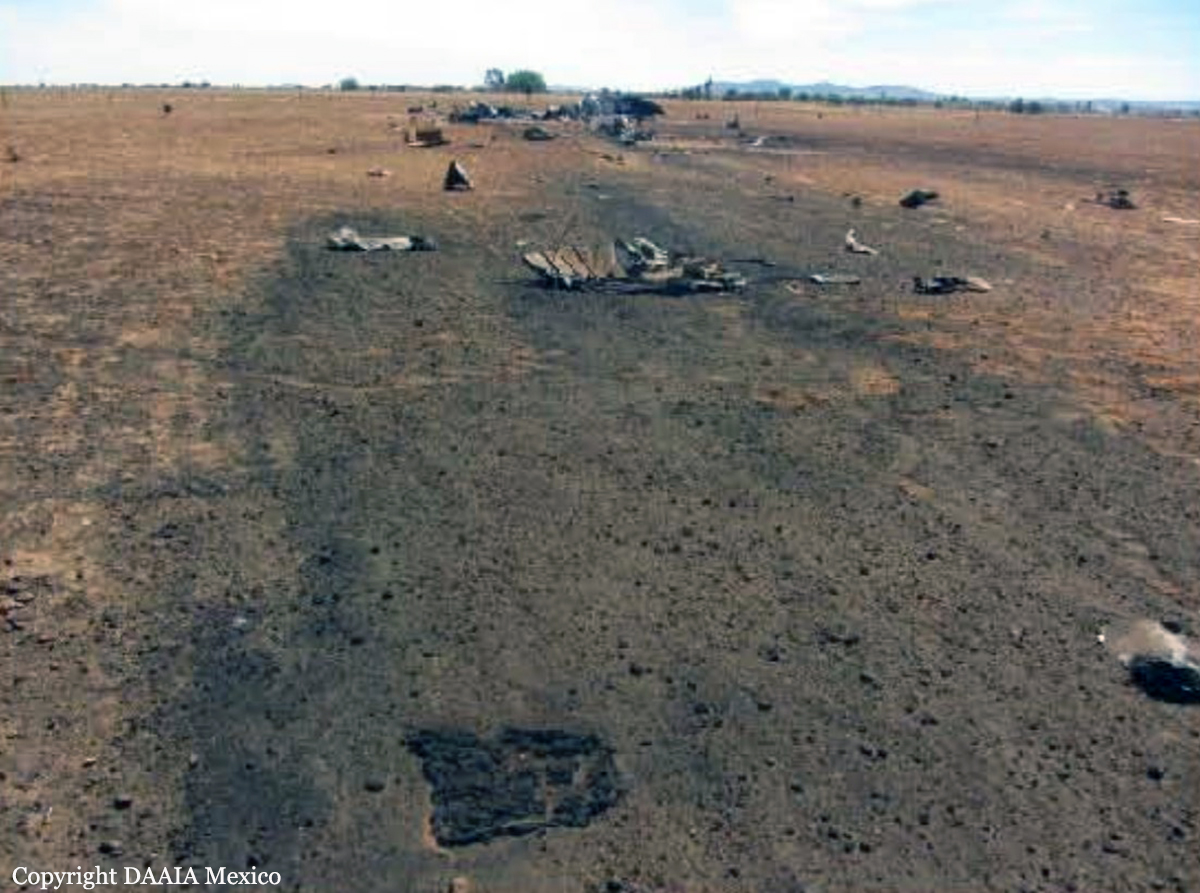
Crash of a Beechcraft 300 Super King Air in Port Orange
Date & Time:
Apr 14, 2004 at 1915 LT
Registration:
N301KS
Survivors:
Yes
Schedule:
Stuart – Daytona Beach
MSN:
FA-61
YOM:
1985
Crew on board:
1
Crew fatalities:
Pax on board:
1
Pax fatalities:
Other fatalities:
Total fatalities:
0
Captain / Total hours on type:
147.00
Circumstances:
The pilot stated that he initiated a fuel transfer due to a fuel imbalance. To affect the fuel transfer, he said he "began crossfeed right to left." When the airplane was about 5 to 10 miles away from Spruce Creek Airport, the pilot said he began his descent from 12,500, and also executed a left turn to begin setting up to land, when suddenly, both engines ceased operating. When he leveled the wings both engines restarted due to auto-ignition. He said the fuel gages showed 300 to 350 lbs of fuel for the right tank, and 100 to 150 pounds on the left, so he decided to continue his approach to Spruce Creek Airport. As he approached Spruce Creek Airport, he again entered a left bank to prepare for a left base to runway 23, and while established in the left turn, both engines ceased operating a second time. He said he did not think he could reach the runway, and decided to make an landing on a taxiway. When the wings became level after the turn, he said both engines again restarted while in the vicinity of the beginning of the taxiway. As he was about to land, he said a car pulled out onto the taxiway, and stopped on the centerline, so he applied power to avoid the car. He said he climbed straight out, and when he made a climbing left turn, he said the engines ceased operating a third time, and the airplane descended towards a cluster of condos. With no runway or clear area in sight, the pilot said he guided the airplane to a retention pond. Follow-on/detailed examinations of the aircraft, engines, and propellers were conducted by an FAA Inspector, as well as technical representatives from Raytheon Aircraft Company, Pratt & Whitney Canada, and Hartzell Propeller Company, and no pre accident anomalies were noted with the airframe, flight controls, engines/accessories, or propellers. According to the FAA Inspector, and the technical representative from the airplane manufacturer, Raytheon Aircraft Company, the pilot was transferring fuel from the left fuel tank to the right fuel tank, and with the reduced amount of fuel in the left tank, as he performed left turns, the engine ceased operating. The Raytheon Aircraft Company representative stated that the Pilot Operating Handbook specifies the use of crossfeed for those times when the airplane is operating on a single engine.
Probable cause:
The pilot's inadequate management of the airplane's fuel system, which resulted in fuel starvation, a loss of engine power, a forced landing, and damage to the airplane during the landing.
Final Report:
Crash of a Beechcraft 300LW Super King Air on Piz Sarsura: 2 killed
Date & Time:
Feb 14, 2002 at 1720 LT
Registration:
D-ICBC
Survivors:
No
Schedule:
Poznań – Samedan
MSN:
FA-227
YOM:
1993
Crew on board:
1
Crew fatalities:
Pax on board:
1
Pax fatalities:
Other fatalities:
Total fatalities:
2
Captain / Total hours on type:
1835.00
Aircraft flight hours:
4141
Circumstances:
D-ICBC was refuelled in Poznan to its maximum capacity of 2040 litres. An ATC flight plan was filed for an IFR flight. After the RENTA waypoint, VFR had actually been entered, but the crew had not filed the flight plan as a Y flight plan, as is prescribed for flights which begin under IFR rules and then end as a VFR flight. However, the flight plan was entered and transmitted as a Y flight plan by the competent unit in Brussels. Take-off time was scheduled for 14:20 UTC. Take-off actually took place at 14:35 UTC. No details are known about the history of the first part of the flight. The aircraft reached the border with Italian airspace in the planned air corridor M736 at flight level 250. The crew reported at 15:54:14 UTC to Padua ACC, sector LOW NORD on frequency 125.900 MHz: “..ua Buongiorno D-ICBC, Flight level 250, appro…approaching LIZUM Point” The air traffic controller instructed the crew to fly “LIZUM, LUSIL direct”. The crew confirmed “LIZUM .... direct DBC”. On enquiring, they received the information that they would be able to descend in about 10 miles. On the radar plot it can be seen that the aircraft did not fly as required direction LUSIL, but turned onto a heading of approximately 240° and was flying in the direction of Samedan. At 15:59:18 UTC, the clearance to flight level 170 was given; which is the lowest IFR flight level (minimum enroute altitude – MEA) in this area. At 16:02:03 UTC, the crew of D-ICBC was asked whether they were flying direct to Samedan. This was confirmed by them. They were then requested to report as soon as they wished to change from instrument flight rules to visual flight rules. At 16:05:16 UTC, the crew change from instrument flight rules to visual flight rules and were requested to contact Samedan Tower on frequency 135.325 MHz, which they did after a brief delay. The Samedan air traffic controller informed the crew that runway 21 was in use and that the QNH was 1012 hPa. He additionally requested them to report as soon as they flew into the valley. After leaving flight level 170, the aircraft turned slightly to the right onto a course of approximately 265° and maintained its continuous descent. At 16:11:25 UTC, the aircraft passed flight level 130 and began to turn slowly to the left. This turn brought the aircraft precisely onto the extended centre line of runway 21 in Samedan. The aircraft was last captured by the radar at 16:15:24. The last flight level indicated on the secondary radar was FL 101. A little later, the aircraft collided with the elevated terrain of the Sarsura glacier at an elevation of 9640 ft AMSL. Both pilots were killed immediately. The aircraft was destroyed.
Probable cause:
The accident is caused by the fact that the crew on its approach according to visual flight rules to Samedan aerodrome, under critical weather conditions and applying inappropriate flying tactics lost the situational awareness and theby the aircraft D-ICBC collided with the terrain.
The following findings were identified:
- The pilot was in possession of a senior commercial pilots licence, issued by the Polish authorities.
- There are no indications of any health problems affecting the pilot during the flight involved in the accident.
- The aircraft was admitted for traffic.
- The investigation produced no indications of any pre-existing technical faults which might have caused the accident.
- The mass and centre of gravity at the time of the accident were within the prescribed limits.
- As weather information, only METAR and TAF for Innsbruck, Zurich, Milan Malpensa and Milan Linate were found.
- No documentation for visual approaches to Samedan were found in the aircraft.
- In the documentation which was available to the investigators, it was not evident that any of the crew members had previously flown to Samedan.
The following findings were identified:
- The pilot was in possession of a senior commercial pilots licence, issued by the Polish authorities.
- There are no indications of any health problems affecting the pilot during the flight involved in the accident.
- The aircraft was admitted for traffic.
- The investigation produced no indications of any pre-existing technical faults which might have caused the accident.
- The mass and centre of gravity at the time of the accident were within the prescribed limits.
- As weather information, only METAR and TAF for Innsbruck, Zurich, Milan Malpensa and Milan Linate were found.
- No documentation for visual approaches to Samedan were found in the aircraft.
- In the documentation which was available to the investigators, it was not evident that any of the crew members had previously flown to Samedan.
Final Report:
